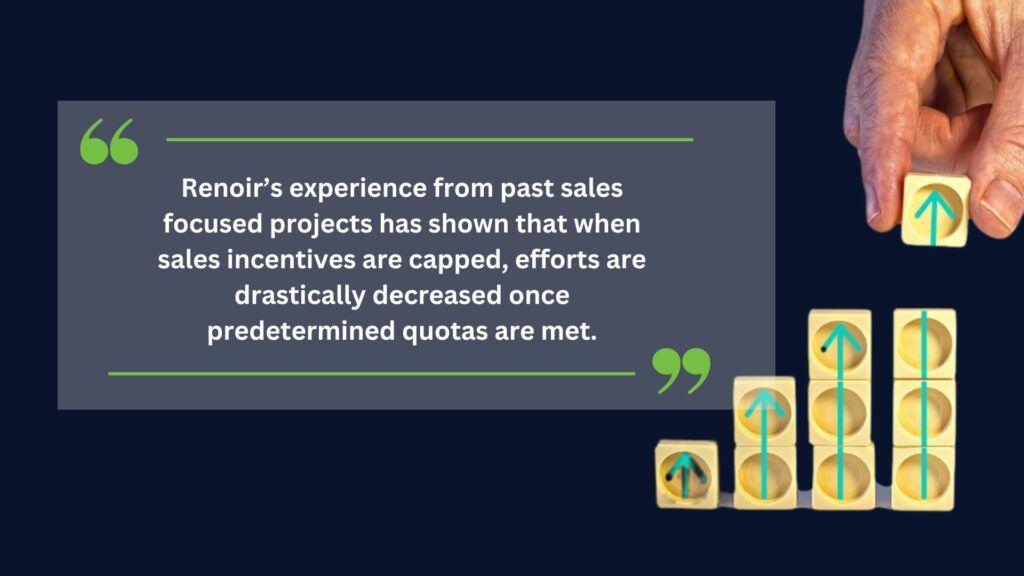At a Glance
- If companies fail to address customers’ wants and needs, they are unlikely to purchase their products or services.
- An effective sales incentive scheme can inspire continuous dedication from sales teams and propel your business to further success.
- There is a need to ‘change the mindset’ or ‘change the DNA’ of your workforce, and on-the-job coaching is a critical tool for successful change management.
Effective sales processes are essential for expanding market share and attracting new customers. Research shows that companies with a well-defined sales structures experience an 18% increase in revenue growth.
In this article, we will discuss some common pain points that can disrupt sales operations and how to overcome them to achieve business success and revenue.
Sales challenges that can hinder customer acquisition
Businesses often struggle with customer acquisition due to challenges in their sales pipeline. Some of the common challenges include:
- Ineffective sales management. This can have a detrimental effect on the team productivity and overall sales performance. Poorly defined roles and responsibilities and unrealistic sales targets for the sales team can lead to confusion, which in turn, result in wasted resources and efforts, leading to poor performance.
- Passive sales behaviour, such as a lack of proactivity and failure to actively engage with potential customers can lead to lost opportunities and decreased sales. When sales representatives are not proactive and do not actively engage with potential prospects, they are more likely to lose opportunities and miss out on sales. A passive sales representative who neglects to follow up with prospects or nurture leads over time leaves potential revenue untapped.
- Negative market perception can affect a company’s ability to attract and retain customers. Companies that are known for overpricing their products, providing poor customer service, or offering inferior quality, can hinder their ability to grow and increase sales.
Redesign your sales pipeline
If companies fail to address customers’ wants and needs, they are unlikely to purchase their products or services. It is imperative that every element of the sales pipeline prioritises a customer-centric approach, beginning with the sales structure.
1. Create a Winning Sales Structure
An effective sales structure should have clear and complete accountability, with customer satisfaction as a shared responsibility. A matrix structure, where the sales team reports to both the sales leader and product managers, can improve product knowledge and targeting. Here are five key sales structures to consider:
- Account-based emphasizes customer relationships. It is used by companies with a small number of customers.
- Product-based focuses on technical knowledge. It is suitable for companies with bespoke or rapidly evolving products.
- Channel-based is used by companies that sell through different channels, each with its own specific metrics such as cost and logistics.
- Territory-based is a common sales structure where sales teams are assigned specific geographical areas to sell all products.
- A hybrid structure combines a blend of the above structures to create a customised approach to fulfil diverse customer needs.
2. Plan for Sales, Plan for Success
Existing accounts are often overlooked as a source of new sales. Companies can identify opportunities for cross-selling or upselling to existing customers by segmenting their customer base. Developing a well-designed sales focused management control system (MCS) can help your business to identify areas for improvement. Key components of a sales focused MCS include:
- Detailed sales plans that outline actions or activities to effectively achieve sales goals. Plans can include the location, customer type, and product or service, to ensure targeted and efficient sales strategies.
- Incentive design to prevent “sandbagging” – a tactic where sales representatives hold back sales once a target is met.
- Smart data collection by implementing systems for recording meetings and customer interactions, to gather useful market intelligence and track progress.
- Performance reporting that includes financial results and activity outcomes, such as the number of meetings and calls, conversion rates, average sales per customer, revenue, and profit margins. The report provides clarity on the sales team’s performance and can help identify areas for improvement.
3. A structured sales incentive scheme
Renoir’s experience from past sales focused projects has shown that when sales incentives are capped, efforts are drastically decreased once predetermined quotas are met. During an engagement with a prominent insurance firm in Southeast Asia, we observed that salespeople stopped processing orders after reaching their quotas, and they carried over excess sales to the following month. An effective sales incentive scheme can inspire continuous dedication from sales teams and propel your business to further success.
4. ‘On Time and In Full’ Distributor Management
It is important to have a comprehensive understanding of product stock-outs, including their location, timing, and underlying causes. While closely monitoring the flow of product from suppliers or distribution centres to stores is important, the focus should be on ensuring on-shelf availability rather than just stockroom inventory. Renoir emphasises on the implementation of systems that measure and improve the ‘on time and in full’ delivery of products, ensuring their availability when and where they are needed. This approach is a critical component of our holistic, ‘wall-to-wall’ process at Renoir.
5. Recruitment, training and on-the-job coaching
Although sales training and the design of an improved MCS are essential, the game-changer lies in on-the-job coaching. Renoir believes that the most substantial impact on performance stems from direct, personalised coaching. It requires more than small tweaks to achieve transformational results. Our clients often express the need to ‘change the mindset’ or ‘change the DNA’ of their workforce, and on-the-job coaching is a critical tool for successful change management.
How we can help you optimise your sales processes
A well-managed sales and channel strategy can optimise profitability, ensuring that a company’s offerings reach the right market segment at the right time, and at the right price. Optimising the sales process improves operational efficiency, as sales cycles accelerate, relationships with channel partners improve, and customer loyalty grows – all of which contribute to a healthier bottom line.
Renoir believes in tailored solutions to fit your unique business needs.











